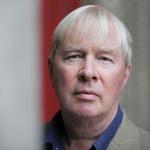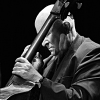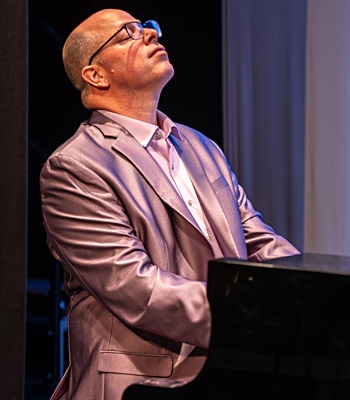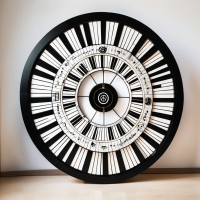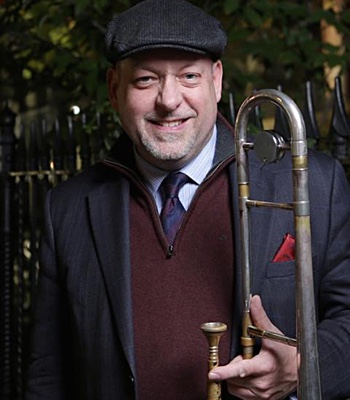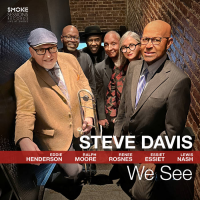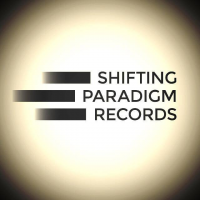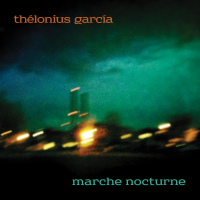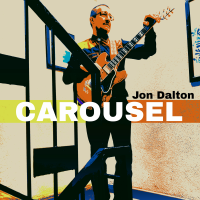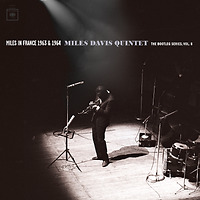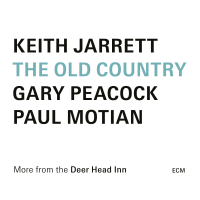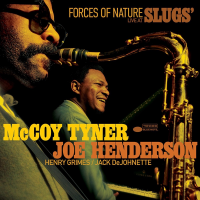Home » Jazz Articles » Multiple Reviews » The Complete Obscure Records Collection 1975-1978
The Complete Obscure Records Collection 1975-1978

Derek Bailey said once to me that he’d had more drinks bought for him on the strength of being the guitarist on Jesus’ Blood Never Failed Me Yet than anything else he ever did in his life.
—Gavin Bryars
 Various Artists
Various ArtistsThe Complete Obscure Records Collection 1975-1978
2023
Obscure was founded by ex-Roxy Music synth player and tape operator Eno in 1975. He produced all the label's albums and was assisted in the A&R process by the then little known composers Gavin Bryars (pictured) and Michael Nyman. Most of the composers Obscure recorded were conservatoire trained but were considered too nonconformist to be employed on conservatoire faculties, Bryars and Nyman included. Mainstream record companies and concert halls were similarly wary. Some of the composers recorded by Obscure remained marginal figures but others went on to enjoy high-profile careers, among them Bryars, Nyman, Simon Jeffes, the Americans John Adams and Harold Budd, and Eno himself. In addition to releasing their own albums on the label, Bryars and Nyman arranged and/or performed on albums led by others. Among the featured musicians of particular interest to AAJers are Carla Bley, Marion Brown and Derek Bailey.
Eno's ambitions for Obscure were evangelical rather than pecuniary. He aimed to use his high profile to give exposure to avant-garde music, in particular to composers who used consonance rather than dissonance and whose work, unlike much contemporary art music, was not necessarily "difficult"; he hoped they might, consequently, appeal to non-specialist listeners. He was sanguine about sales prospects, and is quoted in the liner booklet saying: "I was surprised when [an album] was successful, and I wasn't surprised when it wasn't."
Obscure was bankrolled and distributed by the long established British indie Island Records (Roxy Music's UK label from 1972-75) and most of the albums were recorded at Island's inhouse Basing Street Studios. It is unclear what motivated Island boss Chris Blackwell to underwrite such a seemingly uncommercial project as Obscure but it would not have been unalloyed altruism. It is possible he had in mind the extraordinary success of the newborn Virgin label and its first release, Mike Oldfield's Tubular Bells, which was an off-the-wall chart hit in 1974. Blackwell may have been hoping that a similarly lucrative wild card would emerge from Obscure. While the label did not produce any immediate big sellers, several of its albums are enjoying steady sales nearly 50 years on and counting.
Four of Obscure's 10 albums were released in 1975, three in 1976 and three in 1978. The 1977 hiatus was occasioned by Eno's burgeoning career as a producer in rock and pop. In his liner essay, Gavin Bryars writes that "at one time some of us used an expression to indicate our own unavailability by saying, jokingly, that we were 'working with Bowie in Berlin.'" The label fizzled out after Eno moved to New York towards the end of the decade.
Dialogo's diligently curated and beautifully packaged box includes a 126-page booklet containing the original liner notes for all the albums and newly written essays by Bryars (The History), Bradford Bailey (The Obscure Sounds Of A Quiet Revolution), Max Eastley (Sculpture In The Recording Studio, 1978), Richard Bernas (John Cage's "Voices And Instruments"), Tom Recchion (Epiphanies), Walter Rovere (Notes On Obscure Matter: Prolegomena To A Discography) and by other musicians and creatives associated with Obscure.
The Albums
The 10 albums in the Dialogo box are listed below in the order of original release and are followed by track and personnel details. Gavin Bryars
Gavin BryarsThe Sinking Of The Titanic
(1975)
The Sinking Of The Titanic may not be the most frequently reissued album in the Obscure catalogue—that is Eno's Discreet Music—but Bryar's album, the label's debut, comes second. It consists of two side-long orchestral tracks, "The Sinking Of The Titanic" and "Jesus' Blood Never Failed Me Yet," both sui generis long-form earworms built around minimalist repetition and incremental development. The title track incorporates snatches of two tunes which survivors remembered hearing the Titanic's band playing as the ship sank: the hymn "Autumn" and the ragtime number "O You Beautiful Doll." The centerpiece of "Jesus' Blood Never Failed Me Yet" is a loop Bryars made of a field recording he was given by the film maker Alan Powers of an "old tramp" (his name is not known) singing, over and over again for 25 minutes—melodiously and pretty much in tune—"There's one thing I know, for he loves me so, Jesus' blood never failed me yet, never failed me yet, Jesus' blood never failed me yet." The story goes that Chris Blackwell at first thought Bryars had "gone mad" when he heard the test pressing, because the tramp's voice is unaccompanied for the first three minutes or so. A beautiful, mysterious, wonderful album and a flying start to the Obscure project.
 Christopher Hobbs/John Adams/Gavin Bryars
Christopher Hobbs/John Adams/Gavin BryarsEnsemble Pieces
(1975)
Ensemble Pieces is a compilation of music by Christopher Hobbs, John Adams and Gavin Bryars. Hobbs' "Aran," for reed organ, toy piano and percussion, is pretty and gamelan-like; his "McCrimmon Will Never Return" has himself and Bryars, both on reed organ, getting micro-forensic on Scottish traditional bagpipe music. Adams' "American Standard," recorded by The New Music Ensemble Of The San Francisco Conservatory Of New Music, is in three parts: "John Philip Sousa," with its prominent metronomic bass drum, is a reductio ad absurdum of a Sousa march; "Christian Zeal And Activity" features a recording of a radio phone-in religious show; "Sentimentals" explores what the (unattributed) liner note calls the "maudlin chromaticism" of Duke Ellington's "Sophisticated Lady." Bryars' "1, 2, 1-2-3-4" is a jazz-inflected experiment in group performance by isolated musicians (the complicated performance process is explained in the liner notes). The band includes Derek Bailey and Roxy Music saxophonist Andy Mackay on oboe. A delightfully quirky album from start to finish.
 Brian Eno
Brian EnoDiscreet Music
(1975)
Discreet Music, Obscure's best seller, consists of two side-long tracks, "Discreet Music" and "Three Variations On The Canon In D Major By Johann Pachelbel." With hindsight, Eno's involvement in ambient music and later fascination with generative music can both be traced back to the title track, a self-recorded, overdubbed experiment in partly automative, understated electronic music. Side two's "Three Variations" is broadly speaking in the same bag but more human agency was involved in both the composition and its performance. The piece, which owes a glancing structural debt to Steve Reich, is performed by the Cockpit Ensemble and because Eno did not read music, he explained what he wanted to Bryars, who then wrote the arrangements. Eno has described ambient music as something which does not demand attention but which repays attention if it is given. Discreet Music, which played a large part in codifying the genre, does this in spades.
 David Toop/Max Eastley
David Toop/Max Eastley New And Rediscovered Musical Instruments
(1975)
Max Eastley and David Toop's New And Rediscovered Musical Instruments came about after Eno had attended a concert where both had played and he had fallen asleep. Eno considered this to be the highest possible praise but the album, while no dud, is not among Obscure's best. Like Eno, Eastley and Toop had attended art school rather than music college and their approach to composition is, unsurprisingly, conceptual. Each composer took one side of the original LP. Eastley's is the least self-consciously cerebral and thus the most enjoyable. It consists of four pieces he wrote for a group of instruments which he had designed and built: "Hydrophone," "Metallophone," "The Centriphone" and "Elastic Aerophone/Centriphone." There are descriptions of the instruments (and some photographs) in Eastley's essay, Sculpture In The Recording Studio, 1978, in the Dialogo liner booklet.
 Jan Steele/John Cage
Jan Steele/John Cage Voices And Instruments
(1976)
Side one of Voices And Instruments comprises three pieces which grew out of Jan Steele's involvement in an improvisation group while he was at university in the early 1970s. We are told the group played a quiet, repetitive form of improvised rock-based music and that is the aesthetic which shapes Steele's side of the album: "All Day" (which has Fred Frith on guitar), "Distant Saxophones" (so distant that none can be heard) and "Rhapsody Spaniel," a piano duet by Steele and Janet Sherbourne, the vocalist on "All Day." There is a gentle charm to Steele's writing which has stood the passage of time. Side two is given over to early works by John Cage performed and to some degree recalibrated by pianist and percussionist Richard Bernas: "Experiences No. 1," "Experiences No. 2," "The Wonderful Widow Of Eighteen Springs," "Forever And Sunsmell" and "In A Landscape." The Soft Machine's Robert Wyatt is the curious choice of singer on "Experiences No. 2" and "Wonderful Widow" and Carla Bley the equally curious one on "Forever And Sunsmell." Both were chosen, perhaps, for their star quality, but the lack of professional guile in their voices somehow adds something to the music.
 Michael Nyman
Michael Nyman Decay Music
(1976)
Michael Nyman is probably best known for the film scores he composed for his friend, the director Peter Greenaway in the 1980s: The Draughtsman's Contract, A Zed And Two Noughts, Drowning By Numbers and The Cook, The Thief, His Wife And Her Lover among them. Side one of Decay Music, "1-100," consisting of a hundred piano chords played once only (there is more to it than that, about which see Nyman's original liner note), is a solo piano piece intended for a short film by Greenaway but not used because it was too long. Side two, "Bell Set No. 1," is a percussion piece written by Nyman in 1971. Both pieces investigate how sounds decay and both have intricate mathematical structures. The two pieces demonstrate that, in the right hands, heavy theorising does not necessarily result in heavy going for the listener. Decay Music is a minor masterpiece.
 Simon Jeffes
Simon Jeffes Music From The Penguin Cafe
(1976)
While Simon Jeffes' album is undeniably slight, it is undeserving of the po-faced critical dismissal which it has received. As a blueprint for the uncomplicated, unpretentious, mellifluous chamber music with which Jeffes excelled on later albums with his Penguin Café Orchestra, Music From The Penguin Café is of historical interest. And fun.
 John White/Gavin Bryars
John White/Gavin Bryars Machine Music
(1978)
Despite the dystopian resonance of its title, at least as perceived in 2024, Machine Music is a playful album. John White's four pieces—"Autumn Countdown Machine," "Son Of Gothic Chord," "Jew's Harp Machine," "Drinking And Hooting Machine"—are played with gusto by, respectively, a percussion quartet, a piano duo, a Jew's harp quartet and a blow-across-a-bottle quartet. Bryars' side-long "The Squirrel And The Ricketty Racketty Bridge" is similarly lighthearted, played by a guitar quartet comprising Derek Bailey, Fred Frith, Gavin Bryars and Brian Eno, respectively playing two steel-stringed acoustic guitars, two double-headed electric guitars, two concert guitars and two electric guitars. There is something specially comical about Bryars' piece, or this arrangement of it anyway (Bailey had previously recorded it with just two guitars).
 Tom Phillips/Gavin Bryars/Fred Orton
Tom Phillips/Gavin Bryars/Fred Orton IRMA
(1978)
Bryars' music and Fred Orton's libretto are derived from Tom Phillips' original score printed on a single sheet of paper measuring just 50cms x 50cms and itself distantly derived from A Human Document by the Victorian novelist W. H. Mallock. As with "The Sinking Of The Titanic," a prodigious amount of research went into Bryar's score, which, unusually for him, contains references to Schumann, Beethoven and Haydn along the way. There are two lead singers, two chorus singers and a twelve-piece woodwind, percussion and strings ensemble. It is opera but not as we know it, Jim, and it is a blast.
 Harold Budd
Harold Budd The Pavilion Of Dreams
(1978)
Obscure's final album, like its debut, is one of the label's four out-and-out masterpieces (the other two are Discreet Music and IRMA). It is Harold Budd's first album and looks back, from a long sonic distance, at his early days as a jazz musician (he briefly played drums with Albert Ayler while serving in the army) and forward to his career in "slow" music. There are four tracks, each defined by a glacial melody. The centrepiece, "Bismillahi 'Rrahmani 'Rrahim" (see the YouTube below), which takes up most of side one, was written for alto saxophonist Marion Brown, who had already recorded it on his album Vista (Impulse!, 1975). For the Obscure album, Brown travelled to London with Budd to record it with a nine-piece band including four marimbas (one of them played by Michael Nyman). "Two Songs" ("Let Us Go Into The House Of The Lord" and "Butterfly Sunday") are respectively a setting of a traditional hymn after a version by Pharoah Sanders and an adaption of John Coltrane's "After The Rain." Side two's "Madrigals Of The Rose Angel" and "Juno" are more classical in inspiration. But the tracks hang together as a cycle, as Budd intended.
Tracks and Personnel
The Sinking Of The TitanicTracks: The Sinking Of The Titanic; Jesus' Blood Never Failed Me Yet.
Personnel: Gavin Bryars: piano; Angela Bryars: music box (1); Miss Eva Hart: spoken voice (1); Derek Bailey: guitar (2); Michael Nyman: organ (2); John Nash: violin (2); John White: tuba (2); Sandra Hill: double bass (2); The Cockpit Ensemble conducted by Gavin Bryars.
Ensemble Pieces
Tracks: Aran; American Standard: John Philip Sousa; Christian Zeal And Activity; Sentimentals; McCrimmon Will Never Return; 1,2, 1-2-3-4.
Personnel: Christopher Hobbs (1, 3, 4): tubular bells, triangles, cowbells, toy piano, reed organ, piano; John White: reed organ, toy piano, triangles, drums (1); Gavin Bryars: reed organ, triangles, wood blocks, cymbals, double bass (1, 3, 4); Ensemble Of The San Francisco Conservatory Of Music (2); Derek Bailey: guitar (4); Cornelius Cardew: cello (4); Mike Nicolls: drums (4); Celia Gollin: vocals (4); Brian Eno: vocals (4); Andy Mackay: oboe (4); Stuart Deeks: violins (4); Paul Nieman: trombone (4).
Discreet Music
Tracks: Discreet Music; Three Variations On The Canon In D Major By Johann Pachelbel: Fullness Of Wind; French Catalogues; Brutal Ardour.
Personnel: Brian Eno: all instruments (1); The Cockpit Ensemble conducted by Gavin Bryars (2).
New And Rediscovered Musical Instruments
Tracks: Hydrophone: Metallophone; The Centriphone; Elastic Aerophone/Centriphone; Do The Bathosphere; The Divination Of The Bowhead Whale; The Chairs Story.
Personnel: Max Eastley: metallophone, centriphone, elastic aerophone (1-4); David Toop: flutes, percussion (5-7).
Voices And Instruments
Tracks: All Day; Distant Saxophones; Rhapsody Spaniel; Experiences No.1; Experiences No.2; The Wonderful Widow Of Eighteen Springs; Forever And Sunsmell; In A Landscape.
Personnel: Janet Sherbourne: voice, piano (1, 3); Jan Steele: flute (2), piano (3); Stuart Jones: solo guitar (1); Fred Frith: guitar (1); Kevin Edwards: vibraphone (1); Steve Beresford: bass guitar (2, 3); Phil Buckle: percussion (1); Utako Ikeda: flute (2); Dominic Muldowney: viola (2); Martin Mayes: piano (2); Arthur Rutherford: percussion (2); Richard Bernas: piano, percussion (4, 6-8); Robert Wyatt: voice (5, 6); Carla Bley: voice (7).
Decay Music
Tracks: 1-100; Bells Set No.1.
Personnel: Michael Nyman: piano (1), percussion (2); Nigel Shipway: percussion (2).
Music From The Penguin Cafe
Tracks: From The Colonies; In A Sydney Motel; Surface Tension; Milk; Coronation; Giles Farnaby's Dream; Pigtail; The Sound Of Someone You Love Who's Going Away And It Doesn't Matter; Hugebaby; Chartered Flight.
Personnel: Helen Liebmann: cello; Gavyn Wright: violin; Steve Nye: electric piano; Simon Jeffes: electric guitar, bass, ukelele, quatro, spinet, mouth percussion, vocals, cello, cheng, ring modulator; Neil Rennie: ukelele; Emily Young: vocals.
Machine Music
Tracks: Autumn Countdown Machine; Son Of Gothic Chord; Jew's Harp Machine; Drinking And Hooting Machine; The Squirrel And The Ricketty Racketty Bridge.
Personnel: John White: tuba, metronome, percussion, Jew's harp, piano, bottle (1, 3, 4 ); Christopher Hobbs: bassoon, percussion, Jew's harp, piano, bottle (1-4); Sandra Hill: double bass (1); Gavin Bryars: double bass, metronome, Jew's harp, bottle, concert guitars (1, 3-5); Michael Nyman: Jew's harp (3); Susan Dorey: bottle (4); Brian Eno: bottle, electric guitars (4, 5); Derek Bailey: steel stringed acoustic guitars (5); Fred Frith: double-headed electric guitars (5).
IRMA An Opera By Tom Phillips
Tracks: Introduction; Overture and Aria; First Interlude; Aria; Second Interlude; Chorus; Postlude.
Personnel: Howard Skempton: voice; Lucy Skeaping: voice; Tom Phillips: chorus voice; Angela Bryars: chorus voice; Rory Allam: clarinet, bass clarinet; Dave Smith: tenor horn, vibes; John White: tuba, marimba; Jo Julian: vibraphone, marimba; Michael Nyman: piano, marimba, glockenspiel; Roddy Skeaping: sopranino violin; Stuart Deeks: descant violin; Gavin Wright: treble violin; Adam Skeaping: alto violin; Mark Caudie: tenor violin; Tim Kraemer: baritone violin; Roy Babbington: bass violin; Rodney Slatford: contrasbass violin.
The Pavilion Of Dreams
Tracks: Bismillah 'Rrahmani 'Rrahim; Two Songs; Madrigals Of The Rose Angel; Juno.
Personnel: Marion Brown: alto saxophone (1); Harold Budd: electric piano, piano, voice (1, 4); Maggie Thomas: harp (2); Lynda Richardson: mezzo soprano (2, 4); Richard Bernas: celeste, electric piano (1); Gavin Bryars: glockenspiel, voice (1, 3, 4); Jo Julian: marimba, vibes, voice (1, 4); Michael Nyman: marimba, voice (1, 4); John White: marimba, percussion, voice (1, 4); Howard Rees: marimba (1, 4); Nigel Shipway: percussion (3); Brian Eno: voices (4); Chorus (3).
Tags
Multiple Reviews
Gavin Bryars
Chris May
Brian Eno
Michael Nyman
Simon Jeffes
John Adams
Harold Budd
carla bley
Marion Brown
Derek Bailey
duke ellington
Steve Reich
Fred Frith
John Cage
Soft Machine
Robert Wyatt
Albert Ayler
Pharoah Sanders
John Coltrane
Comments
About Gavin Bryars
Instrument: Bass, acoustic
Related Articles | Concerts | Albums | Photos | Similar ToPREVIOUS / NEXT
Support All About Jazz
 All About Jazz has been a pillar of jazz since 1995, championing it as an art form and, more importantly, supporting the musicians who make it. Our enduring commitment has made "AAJ" one of the most culturally important websites of its kind, read by hundreds of thousands of fans, musicians and industry figures every month.
All About Jazz has been a pillar of jazz since 1995, championing it as an art form and, more importantly, supporting the musicians who make it. Our enduring commitment has made "AAJ" one of the most culturally important websites of its kind, read by hundreds of thousands of fans, musicians and industry figures every month.

